Photo credits
The following photos used on this website are the artwork of talented students who entered the annual Emory Global Health Institute's Global Health Student Photography Contest. Here are their names, schools and the story behind each photo.
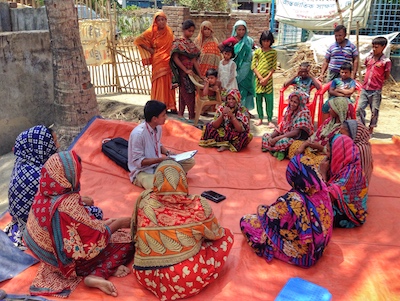
The Gathering
Anushree Mahajan, Rollins School of Public Health
Location: Meherpur District, Bangladesh. Community women gather round for a focus group to assess their perceptions of an arsenic filtering water treatment plant implemented in their community.
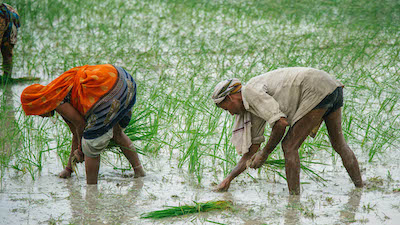
Agriculture in Monsoon Season
Ahad Bootwala, Rollins School of Public Health
Two farmers are shown here, in sync, harvesting summer rice or “Rabi” in Eastern Uttar Pradesh. Due to delays in the monsoon season, Indian farmers have had to delay their harvest and decrease the amount of crop planting. The harvesting season for Rabi is typically May-June; however, these farmers are harvesting their rice in July. India is the second largest producer of rice and is a staple in the diet. Barriers in rice production may result in larger economic and public health consequences for an increasing global population that demands more of this vital crop.
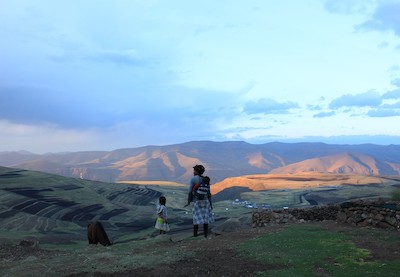
Family Unit in Lesotho
Michelle Henkhaus, Rollins School of Public Health
A mother and her two children head home at dusk in Lesotho. Her husband recently died of HIV, leaving her a widow.
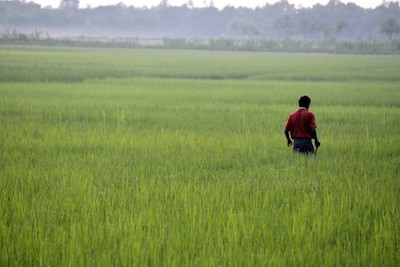
Rice Paddy
Sabrina Haque, Laney Graduate School
A farmer works in a rice paddy in Sylhet, Bangladesh. Green revolution technologies have allowed rice to be a staple crop for Bangladesh’s economic security and food security. Today, rice production accounts for 75% of the country’s agricultural land use. But declining water security, climate change, and rapid urbanization are beginning to challenge Bangladesh’s rice industry.
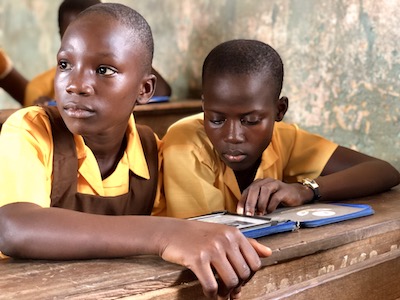
E-Book Classroom Lesson
Ian Hamilton, Laney Graduate School
The 21st century has seen some impressive achievements in terms of access to technology. For this primary school in Kwaebibirem District, Ghana, students use e-books donated by the NGO Worldreader in order to read stories and textbooks that would otherwise be unaffordable in print. With the availability of such reading material, students now have the opportunity to complete their education and improve their quality of life.
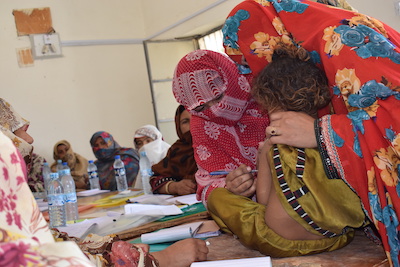
Untitled
Imdad Ali, Rollins School of Public Health
The picture is taken at district Panjgur, Balochistan province of Pakistan. One of the least developed parts of the country. In the picture, frontline lady health worker is giving training on anthropometric measurements for checking the malnutrition status through MUAC tape (a method to check nutrition status of a child).
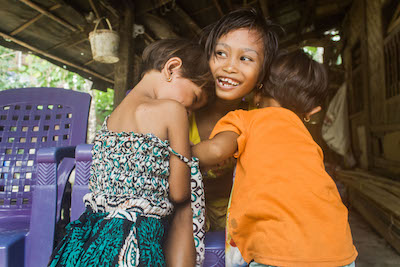
The Three Girls
Steven Sola, Rollins School of Public Health
As workers were busy building a model toilet system as part of Indonesia’s community approaches to total sanitation program, three local children busied themselves with playing with chickens and tickling each other. Even though these girls had a refrigerator in their house, there was no toilet available for them to use. They would openly defecate in the bushes or canals surrounding their house, or in the nearby rice fields. By building a model toilet system at an influential person’s house in the community, the government of Indonesia aims to educate community members about the proper disposal of their feces. This, in turn, would hopefully lead to a reduction in malnutrition and diseases in the community, allowing these children to grow up healthy.
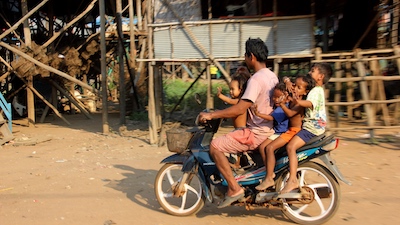
Floating Village During Dry Season
Jessica Labib, Emory University School of Medicine
A father and his four children ride through Kompong Phluk, “The Floating Village,” in the middle of dry season. With the coming of wet season, the water level rises above the stilts seen in the background and villagers travel by boat. Kompong Phluk is a village in the floodplain of Tonlé Sap Lake, the largest lake in Southeast Asia. This fishing village is surrounded by water yet its residents have limited access to clean water for drinking, cooking, and washing. The lake is contaminated by human waste and harsh chemicals used to clean the water. Villagers have little to no access to medical care and thousands of children in the area die every year of waterborne diarrheal illness.
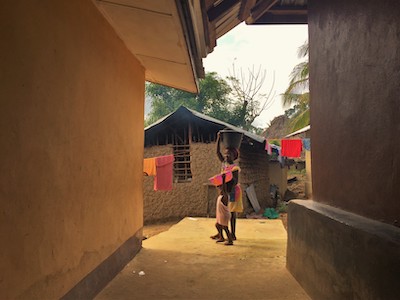
Mami & Fany
Rebecca Wee, Rollins School of Public Health
Mami is a girl living in rural Sierra Leone and she represents too many school-aged girls who have to spend hours of their day fetching water for their household. Every day she goes to the pump to fetch water for her household. Today she has a little help as Fany, her cousin who is too young to be in school, decides she wants to copy her older cousin. Though a fun moment to see the younger Fany so serious in carrying an empty bucket over her head, it is also moment that gives us a glimpse into the future that this responsibility will become her future reality.
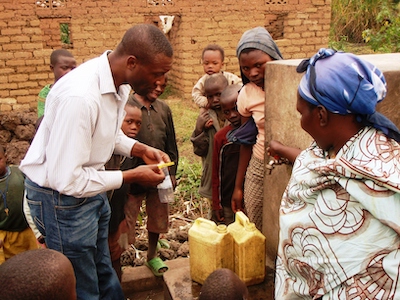
Water Quality Testing Observed by Interested Spectators
Gina Chapleau, Rollins School of Public Health
Location: Rwanda. Community members wait in anticipation for the water operator to turn on the public tap. Water sampling in this remote Rwandan village is rare, inherent in the gazes of interested spectators. The environmental health officer collecting the samples is practicing standard water sample collection practices which will be sent to the district laboratory and tested for indicator organisms, total coliforms and E. coli.
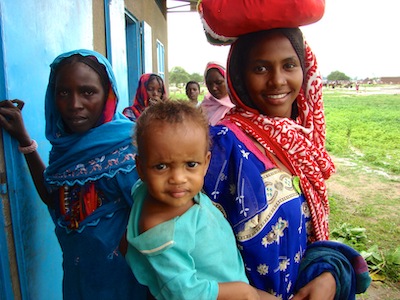
Baby Ahmat on discharge day
Ansley Howe, Nell Hodgson Woodruff School of Nursing and Rollins School of Public Health
Location: Mirer, Salamat Region, Chad. After surviving a critical period of severe undernutrition, a long hospital stay, and two months in an ambulatory feeding program in his village of Mirer, Chad, Ahmat is discharged in good health from the emergency nutritional services program. His young mother holds him, proud of his growth and progress. In eastern Chad during the hunger gap of 2012, severe acute malnutrition (SAM) rates in the under-5 populations reached 18% in some villages.
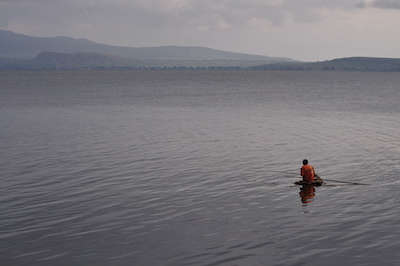
Fishing on Papyrus
Christopher Smitson, Emory University School of Medicine
Location: Lake Awasa, Awasa, Ethiopia. This photo is of a young boy on Lake Awasa fishing for tilapia and catfish on a handmade boat of papyrus. This photo displays the necessity for every member of a family to contribute to the family, and the means by which food is acquired in the Sidama Zone, southwest of Addis Ababa.
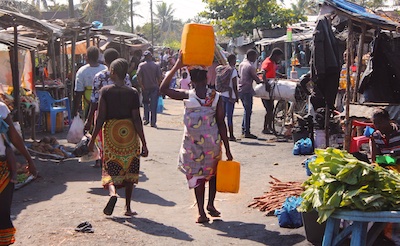
The Unmentioned Heroine
Matthew Derrico, Rollins School of Public Health
The Mozambican market: a place to work; to buy or sell goods and products; to enjoy leisure time; to eat and to drink; to see friends, family and neighbors. The market is the beating heart of the community. This vibrant energy comes, mainly, from the many Mozambican women that inhabit this space. Just within this photo, there are twice as many women as there are men. Several of the women carry babies upon their backs. One sells produce. The woman in the center of the photo, however, is the true heroine here. She carries sixty-five pounds of water in her ten- and twenty-liter jerry cans, in addition to the thirty-pound child on her back—nearly one hundred pounds burdens her frame in the midday heat. She does not complain. This is the weight of a family, of life.